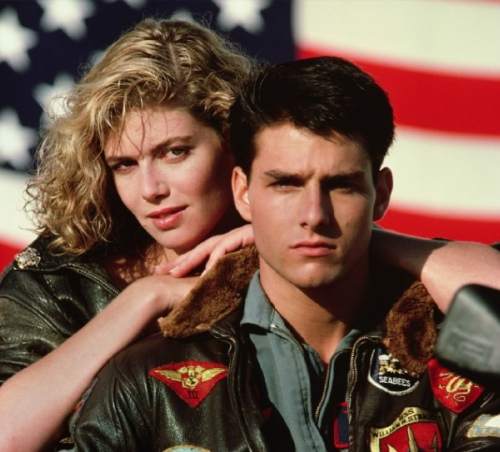Top Gun, the #1 movie of 1986, is back in the news again because it will be converted into 3D for a re-release next year.

We recently discussed Warren Skaaren, the late screenwriter who worked behind the scenes on the ’89 Batman and Beetlejuice, not to mention Top Gun, of course.
Skaaren was from Texas, and Alison Macor, author of Chainsaws, Slackers and Spy Kids, is currently working on a biography of Skaaren. As we mentioned earlier, Skaaren brought a lot to the table for Batman and Beetlejuice, but what did he contribute to Top Gun?
“Skaaren was the last writer on the film, and he came on at a particularly dicey time,” Macor explains. ”The film was about seven weeks away from principal photography, and Tom Cruise, by all accounts, was not happy with his character or the script in general.”
This is why “script doctors” like Skaaren made the big bucks, because they come in and save the game in the last inning.
Macor continues, “Skaaren’s chief contributions were to Cruise’s character and the love story between Maverick and Charlie (Kelly McGillis). He also conceived of Goose’s (Anthony Edwards) wife, Carol (Meg Ryan), as she appears in the film, as a way to humanize Goose but also to add depth to the friendship between Maverick and Goose. I’ve read all of the scripts, about 25 drafts, and I can see how Skaaren’s contributions shaped the story, shifted its focus, and gave depth to the main characters.”
There is a Skaaren archive in Texas, and Macor tells me it has about ten hours of phone calls between Skaaren, and Top Gun producers Jerry Bruckheimer and the late Don Simpson. Skaaren didn’t get much credit on the film, although his contributions were significant, much like Tom Mankiewicz’s major script save on Superman I and II, so he was given an associate producer credit, much like Mankiewicz got “creative consultant” credits on both Superman films he worked on.
Macor says, “Don Simpson, with whom Skaaren got along particularly well, went on the record as saying Skaaren got ‘screwed’ when he didn’t get a writing credit. For this reason, I think, Skaaren was given the assoc. producer credit as a consolation.”
Where a lot of script doctors do big movie gigs to take the money and run, Skaaren “definitely took it seriously and performed producer-like tasks such as viewing dailies, attending test screenings, sitting in on marketing discussions, and so on,” Macor continues.
The working title of Macor’s Skaaren biography is Rewrite Man, and she tells me, “As much as the book will be a biography of Skaaren and his career, it will also be about screenwriting in 1980s Hollywood. I’m especially interested in the fact that all of Skaaren’s top writing projects went to arbitration with the Writer’s Guild, which seems to reflect a trend toward development in Hollywood that escalated in the 1980s with the industry’s emphasis on high-concept filmmaking.
“How does the involvement of so many people – writers, producers, director, star, studio execs – with such different agendas affect the screenplay? I hope this book will explore the complexity of screenwriting credit while offering an exciting story that will recount the challenges faced by a top screenwriter working against mixed and often conflicting agendas in contemporary Hollywood.”






